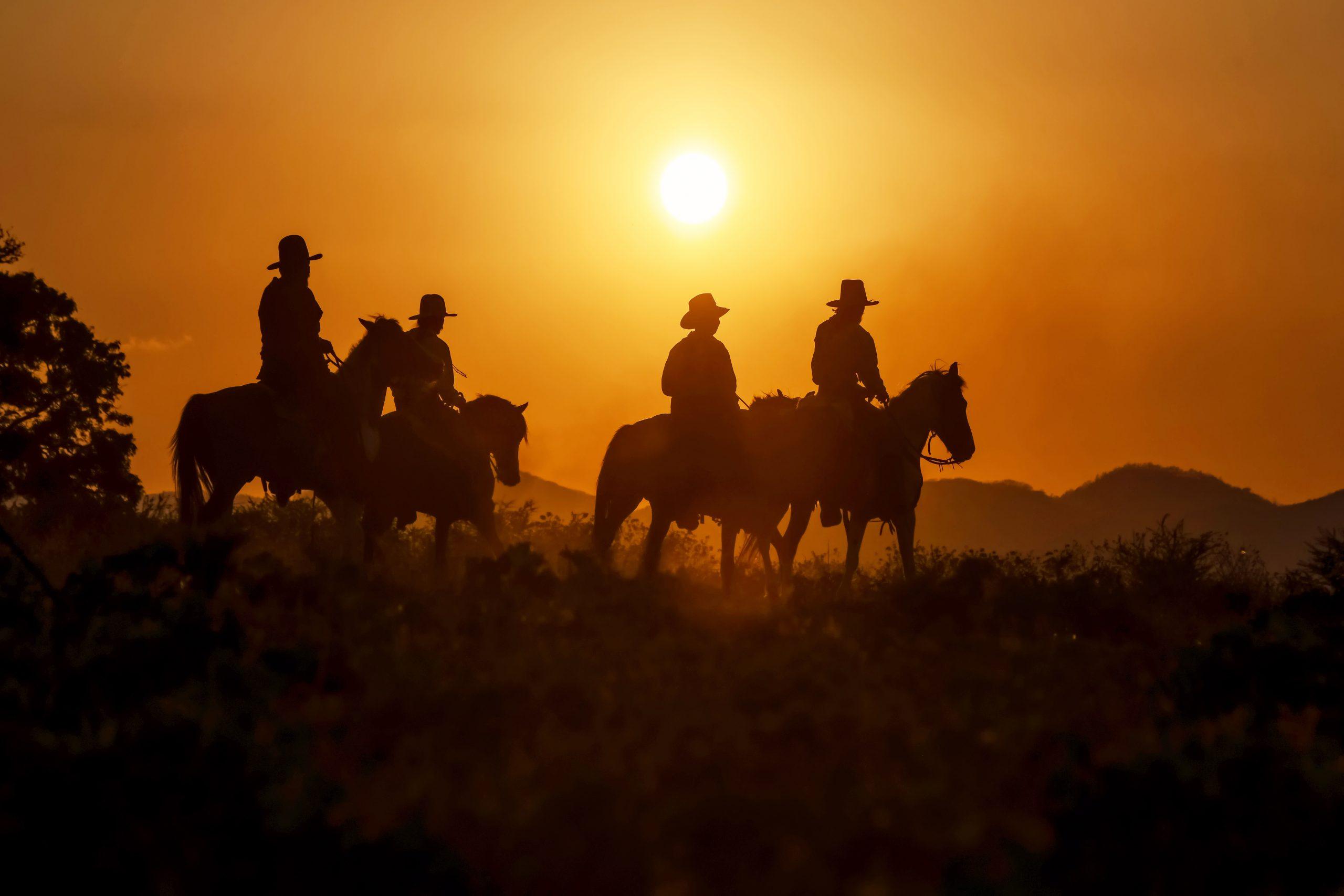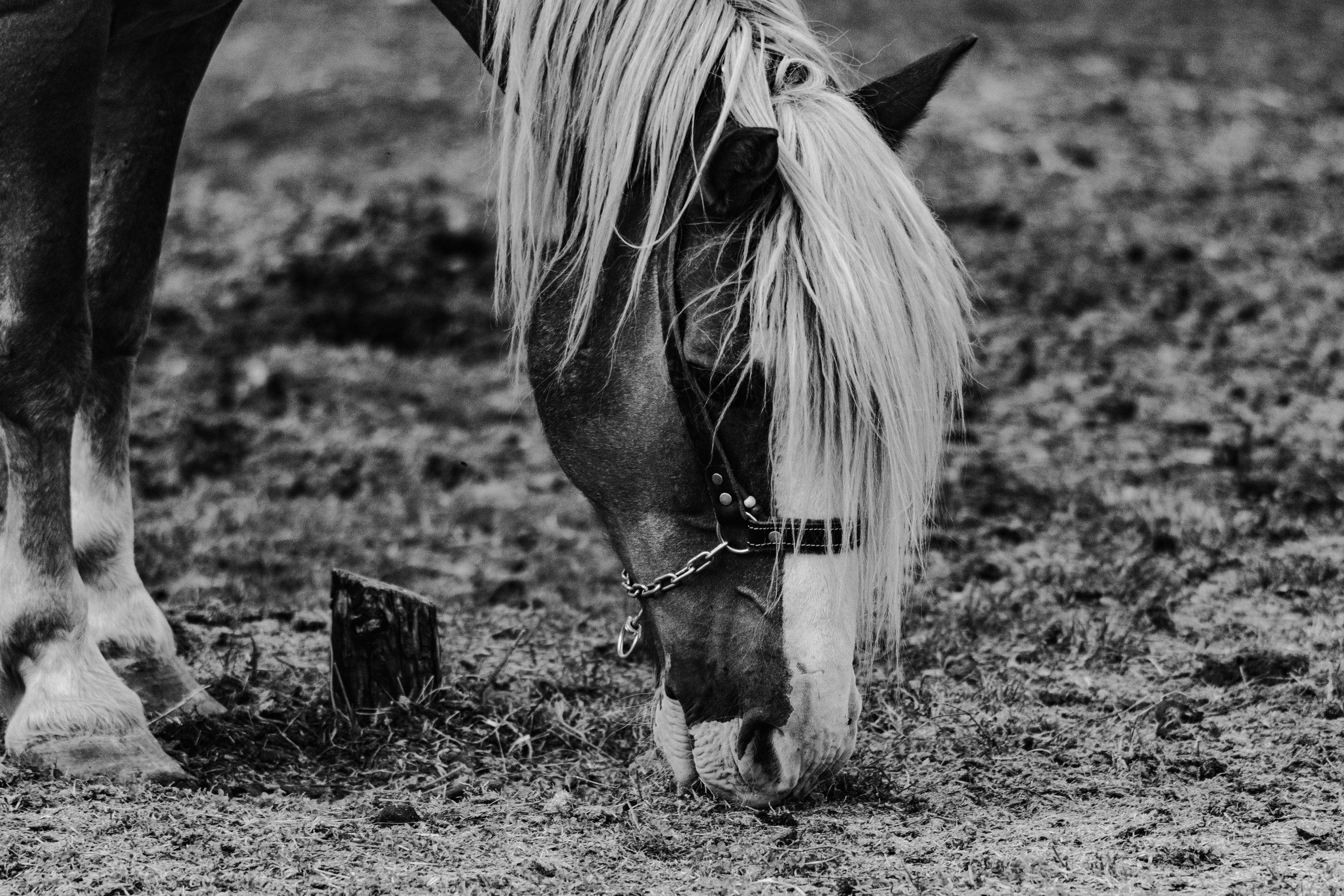Understanding the Weight Limit in Horseback Riding
Horseback Riding and the Importance of Weight Limits
Horseback riding is a popular sport and leisure activity enjoyed by many around the world. It is important to understand weight limits to ensure both rider and horse’s safety. Overloading can lead to fatigue, discomfort, and even injury.
Weight Limits for Horseback Riding
While every horse is different, it is generally accepted that horses can carry up to 20% of their own body weight. This includes the weight of saddles, accessories, and riders combined. Therefore, a 1,000-pound horse should not carry more than 200 pounds in total. Riders exceeding this weight may cause uneven pressure distribution on the horse’s back, leading to pain or even lameness.
Other Factors Affecting Weight Limits
Apart from rider weight, there are other factors that need consideration before riding a horse. The terrain’s condition and steepness may require less weight on the horse’s back. Hot weather conditions also tend to increase a horse’s exhaustion levels faster. Hence it would be best to weigh these factors when determining the rider’s appropriate weight.
Understanding Personal Limits for Horseback Riding
It is crucial for riders themselves to understand how much they weigh before getting on horses’ backs as they are responsible for making that decision about their own safety and that of the animal. Such measures are essential in reducing stress in horses.
A True Story: Nick Skelton represented Great Britain in Eight Olympic Games and became an Olympic Champion at age 58 by winning Gold medal show jumping event at Rio Olympics games 2016 – proving successful equestrian careers have no age limits.
Whether it’s a feather or a boulder, weight is weight and your horse will let you know when you’ve reached the limit.
Factors Affecting Weight Limit in Horseback Riding
To understand the factors affecting weight limit in horseback riding, delve into the horse breed and size, rider experience and ability, and saddle and tack as solutions. Each of these sub-sections contributes to the overall calculation of a safe weight limit for horseback riding.
Horse Breed and Size
The physique of the horse plays a critical role in determining the weight limit in horseback riding. The horse’s breed and size affect its strength and endurance, which eventually dictate how much weight it can carry comfortably. Larger breeds with strong muscles will generally be capable of carrying more weight than smaller-sized horses.
Moreover, more oversized horses tend to have broader backs, making it easier to distribute the rider’s weight evenly across their spine, rather than concentrating it in a particular area. This fact highlights that larger breeds are often the ideal choice for heavier riders.
One essential point to note is that there is no ideal weight limit for all horse breeds. The amount each horse can bear depends on multiple factors like age, fitness level, riding terrain, rider ability and experience, the duration of riding, and more.
Riders should learn how to evaluate their own weight appropriately by consulting a professional rider or veterinarian specialist who can help them determine an optimal weight limit for their personal circumstances.
A beginner rider on a horse is like a first-time driver in a Lamborghini, except the horse probably has better brakes.
Rider Experience and Ability
Experienced and Skilled Equestrian Qualities in Horseback Riding
Rider experience and ability are crucial factors when it comes to weight limits in horseback riding. It is essential for a rider to possess skills such as efficient balance, flexibility, and coordination. These skills allow the rider to handle the horse’s movements properly, which ultimately determines the weight limit that can be handled.
Furthermore, an experienced rider must also have a deep understanding of equine behavior and handling techniques. This knowledge enables riders to handle the horse safely and effectively while also providing them with greater control over their steed.
Moreover, having experience training different horses allows riders to adapt their skills according to each animal’s personality. In this way, riders can ensure that they remain safe while also maximizing their horse’s potential capacity.
Above all else, safety should remain the top priority when assessing rider experience and ability concerning weight limits in horseback riding. Ensure that you have a significant depth of riding skillset before attempting high-weight loads on your horse.
Don’t let poor judgement result in accidents or injuries!
If the saddle and tack don’t fit, your horse will throw a fit and you’ll end up in the dirt.
Saddle and Tack
Proper Riding Gear
The weight limit in horseback riding is largely dependent on the rider’s gear. The saddle and tack, which include the bridle, girth, stirrup leathers, and stirrups themselves, must be well-maintained to ensure proper distribution of weight. A rider must also choose a saddle that suits their body type and riding style to maximize comfort and minimize discomfort for both horse and rider.
Furthermore, the material used in making the saddle greatly impacts its weight-bearing capacity. Synthetic materials tend to weigh less than leather saddles, but may not last as long or provide sufficient support.
Additionally, the size of the saddle tree should match the horse’s overall build to avoid causing discomfort or injury to the animal.
Proper care and regular maintenance of equipment is essential in ensuring longevity and optimal performance while ensuring safety during every ride.
To ensure safe riding for both horse and rider it is important to emphasize on using the right gear at all times. Neglecting proper care and maintenance can lead to equipment failure or injury during riding activities. Don’t risk missing out on a safe, enjoyable ride by neglecting these important factors.
From leisurely trail rides to intense competitive events, weight limits for horseback riding are like Goldilocks – not too heavy, not too light, but just right.
Weight Limits for Different Horseback Riding Activities
To determine the weight limit for different horseback riding activities in “Weight Limits for Different Horseback Riding Activities” with “Trail Riding, Jumping, Dressage, Racing” as solution, this section will explore the specifics of each activity and offer guidelines for weight limits.
Trail Riding
For horse enthusiasts who enjoy spending time outdoors, exploring new areas on a horseback through the lush countryside can be both exciting and therapeutic. Horseback riding for recreation or transportation along trails is becoming increasing popular with riders of all experience levels. The weight limit for trail riding varies depending on factors like the size of the horse, rider’s weight, and saddlery used. The average weight limit for trail riding is usually set at 250 to 300 pounds or lower.
When it comes to trail riding, it is essential to note that bringing along heavy equipment or supplies can quickly exceed the recommended weight limit and put unnecessary stress on your gear and horses. Carrying heavy camping supplies with other personal items will reduce the number of regular heaves a horse should carry during its leisure activities. A rider who exceeds the recommended weight limit significantly may end up losing control over their horse, putting themselves around any experienced riders in grave danger.
It’s noteworthy that some studies have revealed an association between overweight riders and their horses’ emotional state with unacceptable levels of vocalization when ridden. Besides that, excessive weight puts unneeded stress on your equipment which might lead to quicker wear thus shortening its lifespan in the long run.
According to American National Safety Council data shared by Atlanta Trails, an online portal catering outdoor lovers recommends restricting trail rides’ pace based on various factors such as age, length of ride, terrain challenges, weather conditions amongst others.
Conclusion
It is imperative to understand specific limits and guidelines while planning for equine activities like trail rides. Planning beforehand helps prepare the necessary equipment required for each activity devoid of putting extra load on your pet animals or affecting their emotional state adversely.If your horse can jump higher than your weight limit, it’s time to put down the cake and pick up the salad.
Jumping
Horseback Riding Activity – Jumping
Jumping is a high-intensity horseback riding activity that involves jumping obstacles or fences at various heights and distances. The weight limit depends on the horse’s size, strength, and jumping ability, but generally range from 20% to 25% of the horse’s bodyweight. A heavier rider may have difficulty balancing on the horse during takeoff and landing, causing discomfort to the horse and increasing the risk of injury to both rider and horse.
It is important for riders to be physically fit and able to maintain a proper position while jumping. Proper attire such as a helmet, boots with heels, and protective vests should be worn at all times during this activity. Additionally, horses used for jumping should receive regular training and conditioning.
Remember, safety is always a top priority in any horseback riding activity. Never exceed the weight limit recommended for your specific activity. If you are unsure of your weight or have concerns about your ability to participate in jumping, consult with a professional trainer or veterinarian before engaging in this activity. Your safety and the welfare of the horse should always come first.
If you thought horse dancing was all about graceful movements, think again – Dressage has weight limits too, and no amount of twirling will change that.
Dressage
In the equestrian world, a particular style of performance riding called “Dressage” emphasizes harmony between horse and rider. The dressage requires communication with subtle body movements of the rider to execute precise gaits, transitions, and turns. Horse riders weighing up to 220 lbs can perform this activity without any problem because it’s not an endurance exercise.
Furthermore, specific factors affect Dressage performance, such as rider height and weight distribution. Ideally, a horse carrying a heavier or taller rider should have better confirmation to maintain balance. This helps prevent uncomfortable pressure points or unnecessary strain on the horse’s back.
Interestingly, horses themselves have different weight limits depending on breed, stride length, conformational flaws like lordosis (“swayback”) or pigeon toes (“toed-in”). Expert trainers recommend testing the weight tolerance of each horse by starting with 10 percent of its body weight as a guide and gradually increasing this amount over time.
According to Horse & Hound Magazine (2019), certain Dressage competitions follow strict regulations that require checking equipment such as saddles or girths for fitting correctly with appropriate padding before each ride. Failure to do so risks injury to both the horse and the rider during strenuous Dressage maneuvers.
The only weight limit for horse racing is the jockey’s ability to skip breakfast.
Racing
Horse Racing
Competitive horse racing has its own set of weight limits, which vary based on the type of race and the age of the horse. Here are six key points that every enthusiast should know before placing any bets:
- Flat Racing: In flat racing, horses carry weights that vary from around 8 to 10 stone, with allowances for apprentices and female jockeys.
- National Hunt Racing: In national hunt racing, weight limits range from around 10 to 12 stone depending on factors like distance, class of race and qualifiers for different age groups.
- Bumpers or Point-to-Point Races: Weights in these types of races do not have strict regulations and depend on each individual race.
- Pony Racing: Ponies can carry between around 7 to 11 stone depending on their height and age category.
- Cross-country Races: In such unofficial races, weight restrictions are often very loose.
- Endurance Races: In these endurance tests that range over long distances through varied terrains; riders are usually expected to weigh below a certain threshold due to animal welfare reasons.
When it comes to proper training for horse racing, frequent exercise sessions will help horses acclimatize to carrying their respective prescribed weights. Trainers need to make sure that their horses are physically fit enough to handle the load without injury.
Don’t let weight requirements discourage you from getting involved in competitive riding events! With proper training programs tailored by qualified coaches aimed at making gradual improvements in fitness levels while keeping an eye out for overall wellbeing. It is entirely possible even for beginners or those returning from injury/absence) at any level (not just elite riders) can get started right away!
Breaking the weight limit is like putting too much hay in the barn – it may seem harmless, but it’s a recipe for disaster.
Importance of Adhering to Weight Limits
Maintaining Optimal Weight Limits for Horseback Riding
Adhering to weight limits while horseback riding is vital for riders’ safety and horses’ health. Exceeding recommended weight limits places unnecessary strain on both the horse’s back and legs, leading to discomfort, injury, or even permanent damage. Proper weight distribution is necessary during horse riding to ensure the comfort of both rider and animal.
Harmonious Relationship between Rider and Horse
While some may find it difficult to set a specific threshold for weight limits, considering factors such as rider’s height, fitness level, and experience can be ideal in determining optimal weight. Therefore, maintaining suggested weight limitations is essential to establish a peaceful connection between horse and rider.
Taking Note of Individual Cases
Every person has different body types and shapes that can influence the maximum weight limit they ought to adhere to while riding horses. A very crucial aspect when dealing with unique conditions like these is respecting professional opinions from qualified experts who can provide tailored advice suited to individual cases.
A Personal Story
I recall an instance where a friend opted for horseback riding despite being above the recommended limit. As a result, his ride was cut short due to severe cramps he suffered after participating in the sport without considering his body size. This clearly shows how adhering to prescribed thresholds is essential for safe and enjoyable riding experiences.
Choosing a horse for your weight is like finding the perfect pair of jeans – it might take some trial and error, but once you find the right fit, you’ll never want to let it go.
Finding the Right Horse for Your Weight
When it comes to horseback riding, choosing the right horse for your weight is crucial for both safety and comfort. Here’s what you need to keep in mind:
- Consider your weight: Your weight should not exceed 20% of the horse’s bodyweight. This will ensure that the horse can carry you comfortably without any strain.
- Assess your riding experience and skill level: You need a horse that matches your level of experience, temperament, and riding style for added stability and control.
- Determine the horse’s physical condition: The horse should be in good health conditions to bear the extra weight efficiently. A vet checkup will provide valuable insight into its suitability.
- Think about the type of terrain and activity: The size and breed of a suitable horse may differ based on whether you are riding on flat trails versus steep mountainous paths or engaging in leisurely activities versus competitive events.
It is also essential to keep a balance between having fun while ensuring the well-being of the animal you’re riding.
Pro Tip: If you’re unsure about which horse is best suited to carry your weight, seek advice from an experienced trainer or instructor. It can save you from injuries and unpleasant experiences down the road.
Sorry to break it to you, but there’s no weight limit for horseback riding… unless you count the horse’s breaking point.
Conclusion
Horseback riding is a popular form of transportation, leisure activity and competitive sport worldwide. However, riders are often curious about the maximum weight limit they can carry while horseback riding. Axing your weight limit will depend on several factors such as the size and strength of the horse, your riding ability and experience.
It’s important to remember that horses are living beings just like us, with their own physical limitations and capabilities. A general rule of thumb is that a fully grown horse should not carry more than 20% of its own body weight including the rider’s weight, saddle, and any other equipment. For example, if a horse weighs 1,000 lbs., it shouldn’t carry more than 200 lbs in total.
It’s also important to consider the type of riding you’ll be doing when determining a safe weight limit. Light leisurely trail rides with little to no incline may allow for heavier riders compared to rigorous and strenuous competitions like show jumping or dressage events.
In fact, history has shown us that heavy riders can have severe consequences on horses’ health. In World War I, heavy cavalrymen caused significant harm to their horses due to their weight, leading to regulations around cavalry men’s maximum allowed weights in various countries after the war.
In summary, there is no set answer for a safe weight limit for horseback riding but considering your own weight and fitness along with choosing an appropriate horse for your experience and mode of riding could greatly reduce potential risks.






